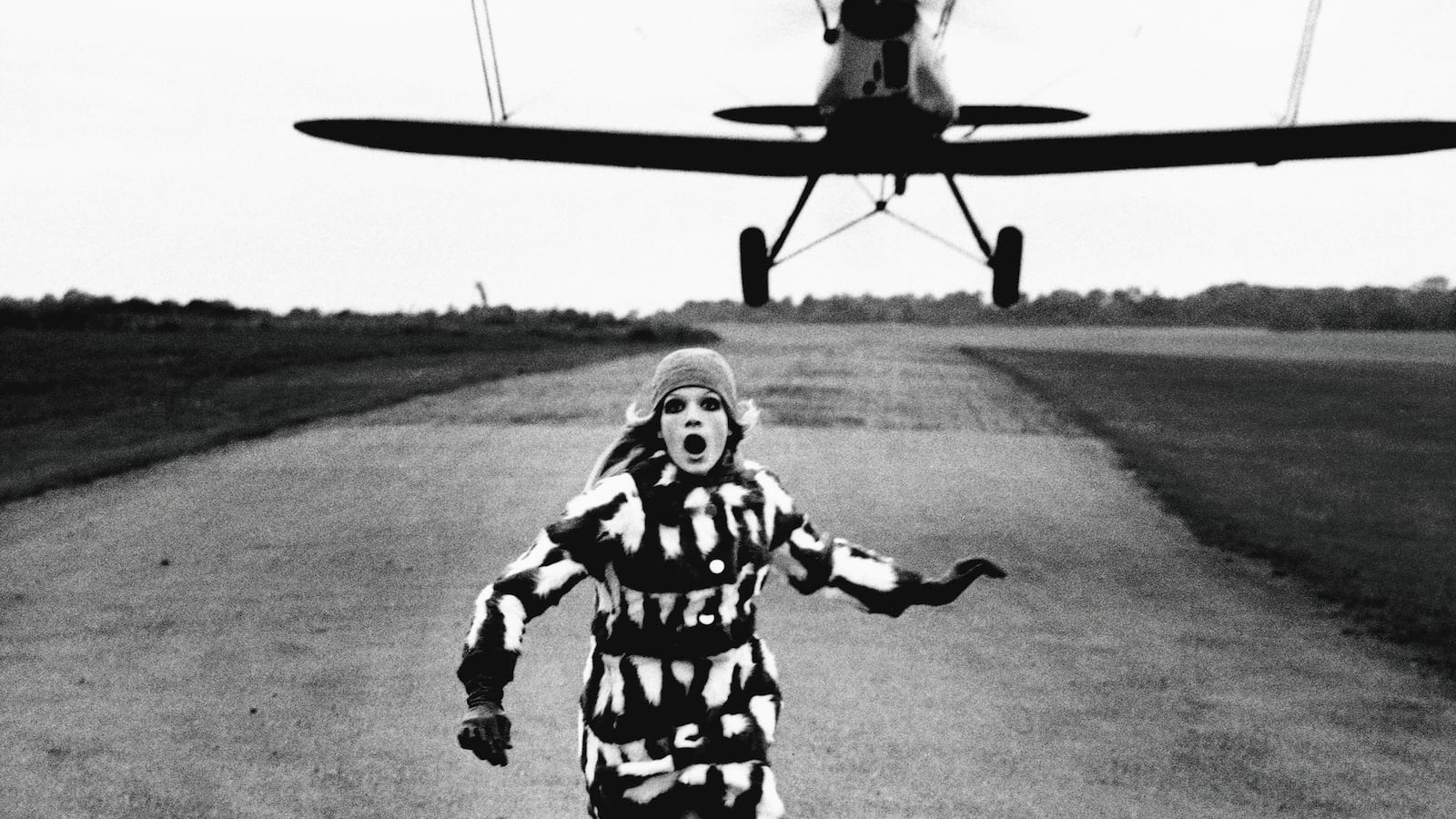This week welcomes a reprint of a seminal book of fashion photography, World Without Men, a collection of sumptuous pictures taken by Helmut Newton from the mid-1960s to the early 1980s.
The new edition of the book, which has been out of print for decades and was one of his first, now includes a personal diary written by Newton himself. There are detailed dispatches from the various cities he photographed: Monte-Carlo, Los Angeles, Warsaw, Lake Como.
As the title suggests, the protagonists of these photographs are always women—heroic, powerful, and fiercely feminine. The frames, almost all of which were shot on assignment for fashion magazines, are so cinematic that they beg you to invent a narrative: a woman, legs spread, hungrily eyeing a shirtless man before her; a clothed woman greeting be-Speeoded male visitors on the steps of her villa.
“I have to thank the commercial world,” Newton, who died in 2004, wrote of his work in 1984. “The ‘consumer society’—for whatever success I have had, not foundations, museums, or grants…I find the editorial page acts for me as a kind of ‘think tank’ or laboratory to try out new ideas.” He continued: “When I take pictures I don’t do it just for myself, to put them away in a drawer. I want as many as possible to see them.”
Helmut Newton, Stern, Saint Tropez, 1978
This photograph was taken during one of the many summers Newton spent in Ramatuelle, in the South of France, with his wife, June. The assignment was for Stern magazine—a “ready-to-wear” report of the coming season’s designs. The options were black and formal—a stunning contrast to the city’s informality. “For many years I have been watching the crowds on the Saint-Tropez beaches,” Netwon wrote before the shoot. “There is no better place in the world for a voyeur like me to be constantly amused.”
Helmut Newton, French Vogue, Dakar, 1971
“This has been a nightmare trip,” Newton wrote of his journey to Dakar, Senegal, for French Vogue in the blistering summer of 1971. The model who had accompanied him on the trip fell ill on their trip from Dakar to Saint-Louis: “We stop the car and we lay her by the roadside,” wrote Netwon. “There is hardly any shadow; it’s brush country…The girl faints dead away. We load her back into the car, turn around and race back to Saint-Louis—it’s nearer than Dakar and we both know we must be quick.” The model recovers in a hospital there, while Netwon telephones the magazine and tells the editors he needs a replacement in order to finish the job. “They’re furious,” he wrote. “This will cost a lot of money, extra fares. They seem to be blaming me for all this, but they also know that I need a new girl to finish the job.” Fortunately for Newton, “she arrives within twenty-four hours.”
Helmut Newton, British Vogue, London, 1967
Few images convey frantic motion like this one—of a model charging across a British landscape in white Go-Go boots in 1967, an airplane not far behind.






